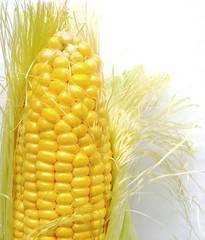
![]() Photo credit: Darwin Bell
Photo credit: Darwin Bell
“Would you like a bag with that?â€, asks the girl at the grocery store check-out. You glance at the couple of items purchased, and think of the walk home. She sees you hesitating and adds “It’s okay; these plastic bags are biodegradable. In fact, they’re made of corn!â€
“Perfect!â€, you think. Or is it?
The Good
This specific type of plastic is called PLA, or Polylactic acid. Simply put, PLA is created by fermenting the starch of corn kernels. Plastic made from PLA look and feel exactly like regular plastic, and PLA plastic bags are just as durable and lightweight as their non-PLA counterparts.
A renewable resource, PLA or “corn plastic†is 100% compostable. Under the right conditions, PLA breaks down in about one to six months in a commercial composter.
The Bad
But wait... what about in a landfill? As we all know, unless recycled, plastic bags that are used for groceries end up in city landfills, not commercial composters. In order to biodegrade, the PLA must receive sufficient amounts of oxygen, water, light and soil, which are not usually present in a landfill. Thus, it can take corn plastic just as long as regular plastic to break down—up to one thousand years. Unfortunately, that means that using corn plastic bags to line trash cans is no better than using regular plastic.
The Ugly
Although corn may be a renewable resource, there is only a certain amount of corn in the world to be used at a certain time. The use of corn for anything other than food seems a little selfish when we consider how much of the world’s population go hungry every day. For example, the use of corn for ethanol has increased the price, and the demand, of this important crop. Furthermore, corn crops require an enormous amount of pesticides and chemical fertilizers compared to other US-grown crops.
One other not-to-be-overlooked fact about corn plastic: regardless of what some companies claim, PLA can cause severe reactions to people who have corn allergies. Accordingly PLA plastic should be clearly marked as derived from corn.
The Verdict?
PLA plastic may be a step in the right direction when it comes to sustainability, it’s one piece of a much wider issue. As in most cases, all parts of the story need to be closely examined. Perhaps with further research, a better alternative can be found. For now, however, if corn plastic seems too good to be true, it probably is. Next time, take a reusable cloth bag to the supermarket.
Recommended Comments
Join the conversation
You can post now and register later. If you have an account, sign in now to post with your account.